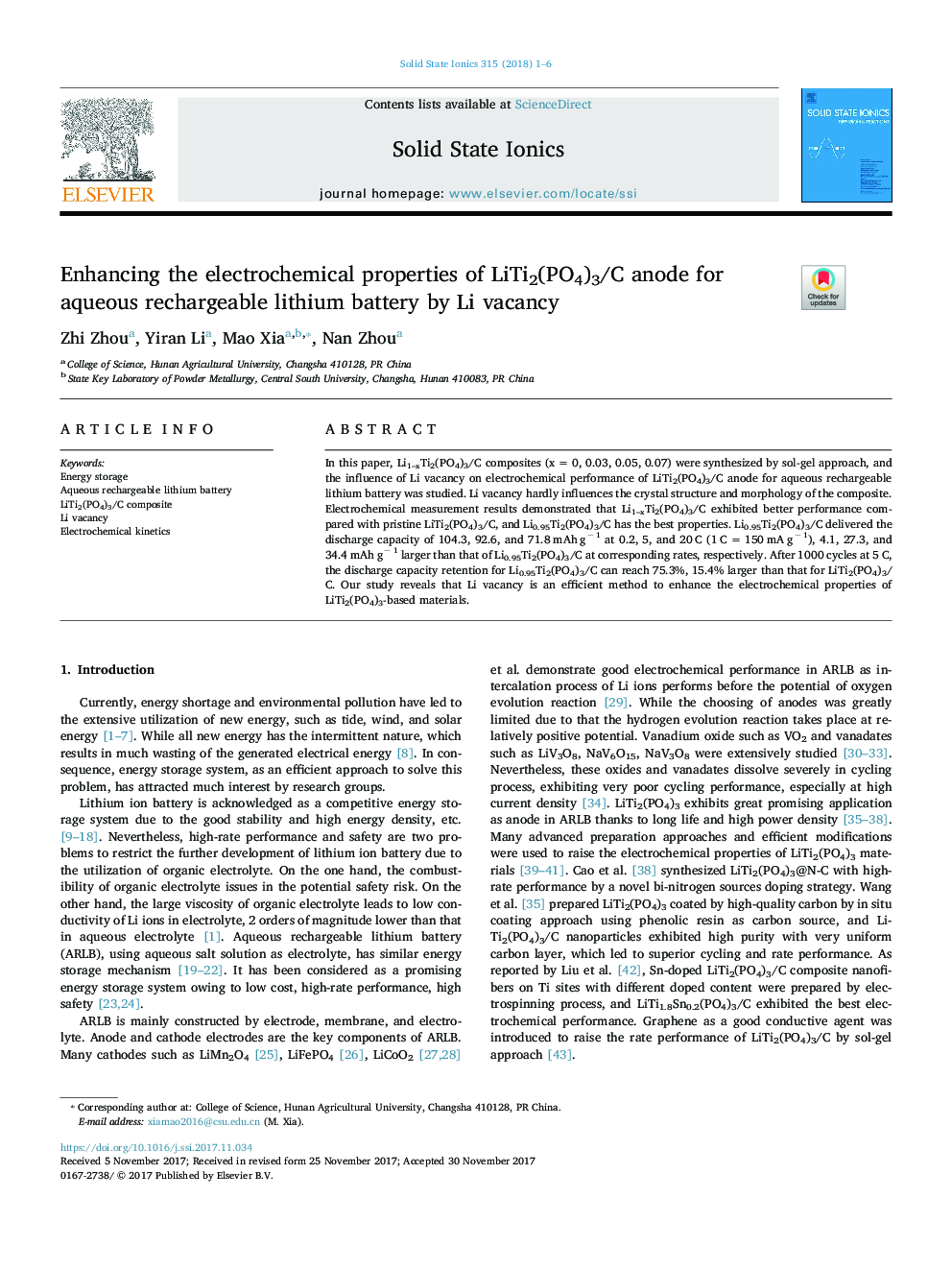| Article ID | Journal | Published Year | Pages | File Type |
|---|---|---|---|---|
| 7744627 | Solid State Ionics | 2018 | 6 Pages |
Abstract
In this paper, Li1-xTi2(PO4)3/C composites (x = 0, 0.03, 0.05, 0.07) were synthesized by sol-gel approach, and the influence of Li vacancy on electrochemical performance of LiTi2(PO4)3/C anode for aqueous rechargeable lithium battery was studied. Li vacancy hardly influences the crystal structure and morphology of the composite. Electrochemical measurement results demonstrated that Li1-xTi2(PO4)3/C exhibited better performance compared with pristine LiTi2(PO4)3/C, and Li0.95Ti2(PO4)3/C has the best properties. Li0.95Ti2(PO4)3/C delivered the discharge capacity of 104.3, 92.6, and 71.8 mAh gâ 1 at 0.2, 5, and 20 C (1 C = 150 mA gâ 1), 4.1, 27.3, and 34.4 mAh gâ 1 larger than that of Li0.95Ti2(PO4)3/C at corresponding rates, respectively. After 1000 cycles at 5 C, the discharge capacity retention for Li0.95Ti2(PO4)3/C can reach 75.3%, 15.4% larger than that for LiTi2(PO4)3/C. Our study reveals that Li vacancy is an efficient method to enhance the electrochemical properties of LiTi2(PO4)3-based materials.
Related Topics
Physical Sciences and Engineering
Chemistry
Electrochemistry
Authors
Zhi Zhou, Yiran Li, Mao Xia, Nan Zhou,
